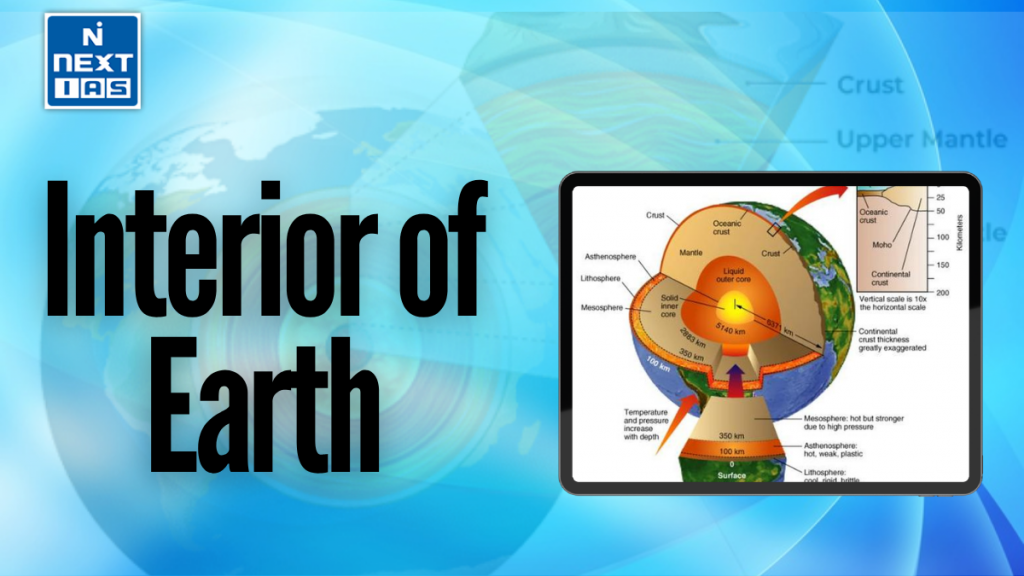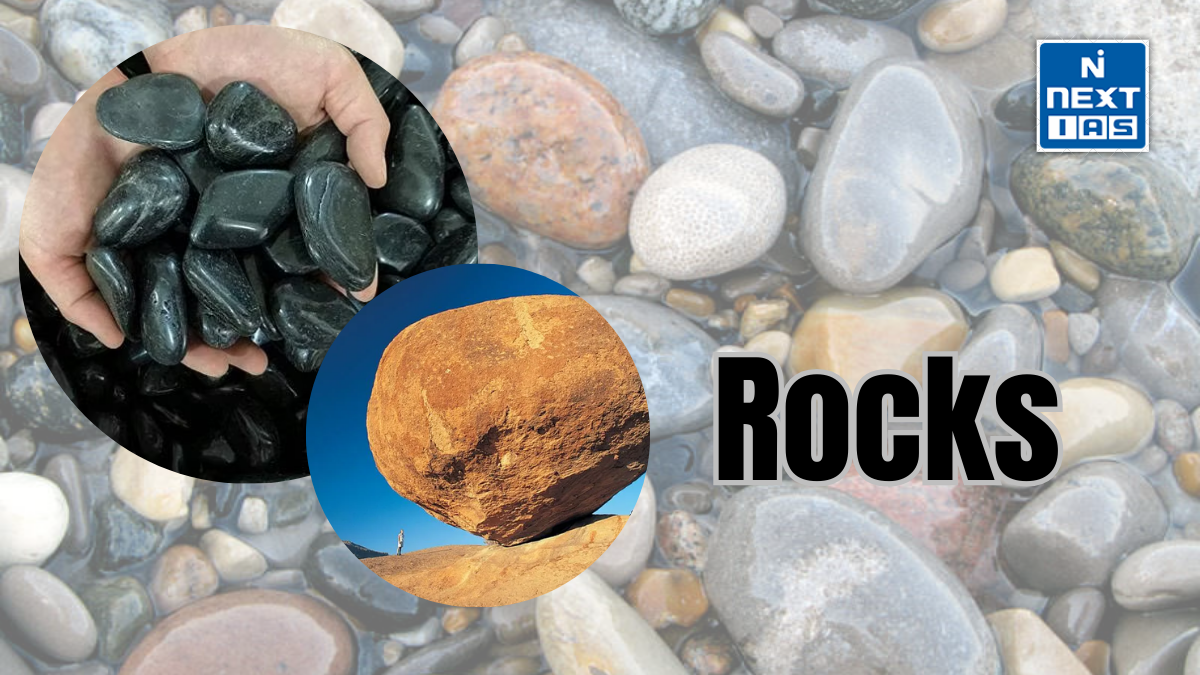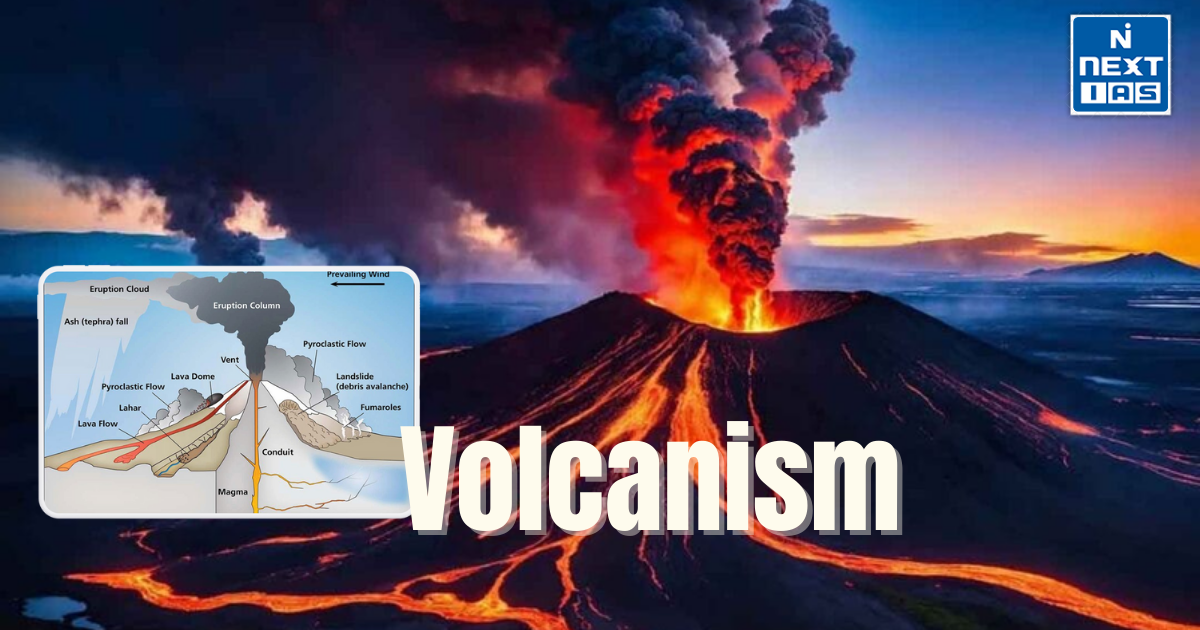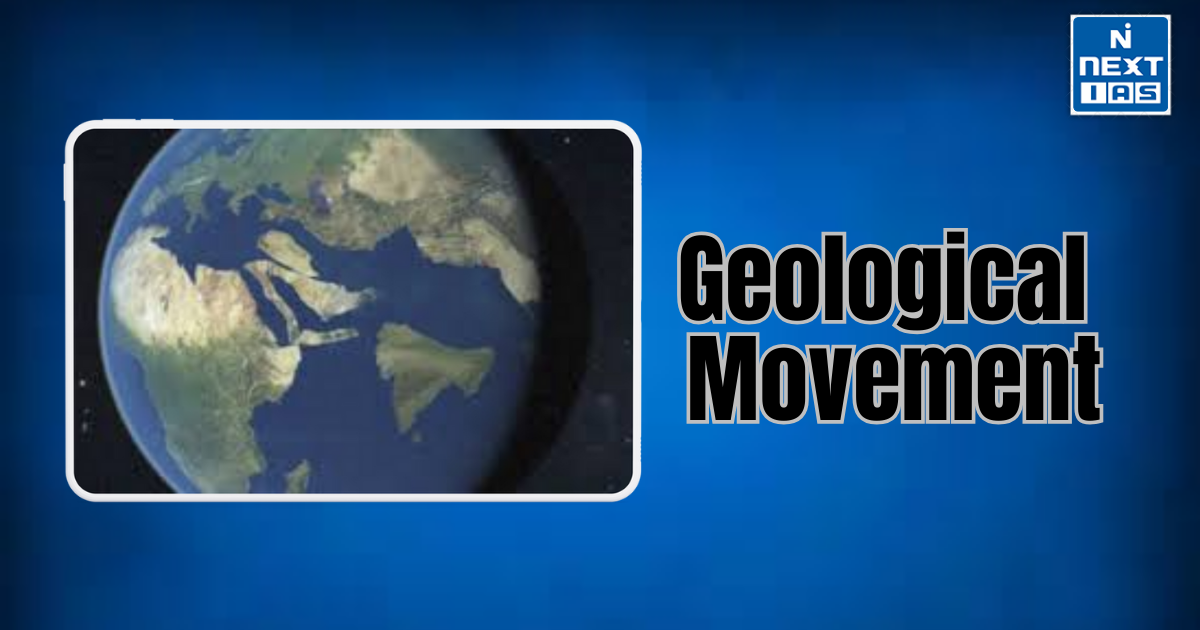
An interior of Earth-that is a dynamic and layered structure-has great influence on the geology of the surface and surface life. Consisting of the crust, mantle, and core, the layers interact with each other to cause the process of plate tectonics, volcanism, and the very magnetic field of the Earth, shaping the crust and ensuring geodynamic and thermal equilibrium of the Earth.
About the Interior of Earth
- The Earth’s inner side represents a complicated, stratigraphic structure composed of the crust, mantle, and core, having different characteristics and functions.
- The crust is the topmost layer; it is very thin and solid and fairly supports life, essentially making it a kind of Earth surface.
- Under it is the mantle, a gargantuan and semi-solid layer of silicate minerals extending to a depth of about 2,900 kilometers. The mantle, with its convection currents, drives plate tectonics to form earthquakes, volcanoes, and mountains.
- The core lies at the very center of the Earth and is further divided into the liquid outer core and the solid inner core.
- Through its motions, the molten iron-nickel fluid generates the magnetic field.
- The inner core is said to be solid despite the high temperature because of the extremely high pressure.
- Studying the Earth’s interior allows scientists to understand some geological phenomena, natural hazards, or evolutionary changes, thus helping to solve some mysteries about processes and transformations occurring on Earth.
Structure of the Interior of the Earth
The Earth’s interior is structured into distinct layers based on composition, physical properties, and behavior. These layers are:
Crust
- Description: The outermost, rigid layer of the Earth, where life exists.
- Types:
- Continental Crust: Thicker (30-70 km) and composed primarily of granite.
- Oceanic Crust: Thinner (5-10 km) and denser, made mostly of basalt.
- Significance: Contains Earth’s surface features, minerals, and resources.
Mantle
- Location: Lies beneath the crust and extends to a depth of about 2,900 km.
- Composition: Silicate minerals rich in magnesium and iron.
- Layers:
- Upper Mantle: Includes the lithosphere (rigid) and asthenosphere (semi-solid, ductile).
- Lower Mantle: More rigid due to higher pressure.
- Significance: Convection currents in the mantle drive plate tectonics.
Core
- Outer Core:
- State: Liquid
- Composition: Molten iron and nickel.
- Significance: Generates Earth’s magnetic field through dynamic movements.
- Inner Core:
- State: Solid
- Composition: Primarily iron, with some nickel.
- Significance: The Earth’s densest layer, under immense pressure.
Composition of Interior of the Earth
The Earth’s interior is composed of distinct layers with varying compositions and properties, categorized into the crust, mantle, and core:
Crust
- Composition: The crust is primarily composed of silicate minerals.
- Continental Crust: Rich in silica and aluminum (felsic rocks like granite).
- Oceanic Crust: Composed mainly of silica, magnesium, and iron (mafic rocks like basalt).
- Elements: Predominantly oxygen, silicon, aluminum, and smaller amounts of iron, calcium, potassium, and sodium.
Mantle
- Composition: The mantle consists of silicate minerals rich in magnesium and iron, such as olivine and pyroxene.
- Upper Mantle: Includes the lithosphere and asthenosphere, characterized by ductile, semi-solid rock.
- Lower Mantle: Denser and more rigid due to increased pressure.
- Elements: Dominated by oxygen, silicon, magnesium, and iron.
Core
- Outer Core:
- Composition: Molten iron and nickel with traces of lighter elements like sulfur and oxygen.
- Inner Core:
- Composition: Solid iron and nickel, under extreme pressure.
- Elements: Primarily iron (85%), nickel (10%), and lighter elements (5%).
Significance of Studying the Interior of the Earth
Studying Earth’s interior is important for understanding dynamic processes that sculpt the host and affect life. The key significances of Earth’s interior are as shown below:
- Understanding Geological Processes
- Helps account for natural phenomena such as plate tectonics, earthquakes, and volcanic activity.
- Offers insight into mountain-building processes, ocean basin formation, and landform development.
- Natural Hazard Forecasting and Mitigation
- Aids in the forecasting of earthquakes, volcanic eruptions, and tsunamis, thereby reducing their impacts on affected communities.
- Increases disaster preparedness and planning.
- Earth’s Magnetic Field
- Gives an understanding of Earth’s core dynamics and the formation of the magnetic field, which acts as a shield for the planet against harmful solar radiation.
- Resource Exploration
- Is an aid in searching for minerals, fossil fuels, and geothermal energy.
- Ascertains sustainable use of resources.
- Evolution of the Planet
- Provides clues to how the Earth came into existence and remained thermally active while evolving.
- Helps compare Earth’s structure with that of other planetary bodies and thus contributes to the science of planets.
- Climate and Environmental Studies
- Studying mantle convection and carbon cycles enhances knowledge of long-term climate changes.
Investigating Earth’s interior is crucial for comprehending its dynamic processes, managing natural hazards, and sustaining life, resources, and the environment.
New Research in the Field of the Interior of the Earth
Recent studies performed recently have brought some crucial insights into understanding the interior of the Earth with regard to its dynamic processes:
Dynamics of Inner Core Rotation
- Slowing of Thus Rotation: It seems that Earth’s inner core had been rotating slowly after about 2010 at a speed slower than that of the surface of the planet.
- Potentially Reversing: Some research would even suggest that the speed may not be the only thing which is decreasing-putative inner core rotation may also be reversals, if real, this could have an effect on the magnetic field of Earth and the length of day.
Discovery of a New Core Layer
- From seismological consideration, a new innermost layer within the inner core has been revealed, a so-called “planet within a planet,” which could offer more insights into Earth’s formation and magnetic field generation.
Advances in Simulation Techniques
- With recent advances in computer techniques, new methods for simulating atomic behavior and magnetic properties at extreme conditions have been developed, which will most certainly led to a new understanding of the inner core dynamics and the generation of the magnetic field.
Deep Mantle Sampling Achievements
Scientists have successfully drilled over 1,268 meters below the Atlantic seabed, obtaining the deepest rock samples from Earth’s mantle. These samples are expected to shed light on mantle composition and the chemical interactions between mantle rocks and seawater, potentially offering clues about the origins of life on Earth.
Neutrino Oscillation Studies
Atmospheric neutrino observations are being utilized to probe Earth’s internal structure, providing complementary data to traditional seismic studies and offering new perspectives on the composition and behavior of Earth’s interior.
These advancements underscore the dynamic nature of geophysical research and its pivotal role in unraveling the complexities of Earth’s interior.
Way Forward
The interior of Earth can be studied with enhancement in seismic imaging, deep drilling projects, and observation of neutrinos. The cooperation between geophysicists, chemists, and engineers will be crucial in bringing about novel exploration methods. These activities will further the knowledge of how Earth behaves, will aid natural disaster forecasting, and exploitation of resources for sustainable development.
Conclusion
The interior of Earth is layered and dynamic in making the underlying processes that shape the Earth. Through the layers, they ensure the evolution of Earth and human life, such as causing tectonic activity and generating magnetic fields. As the research progresses, it deepens our understanding, with the result being that it can influence science, resource management, and disaster mitigation.
GS - 3





